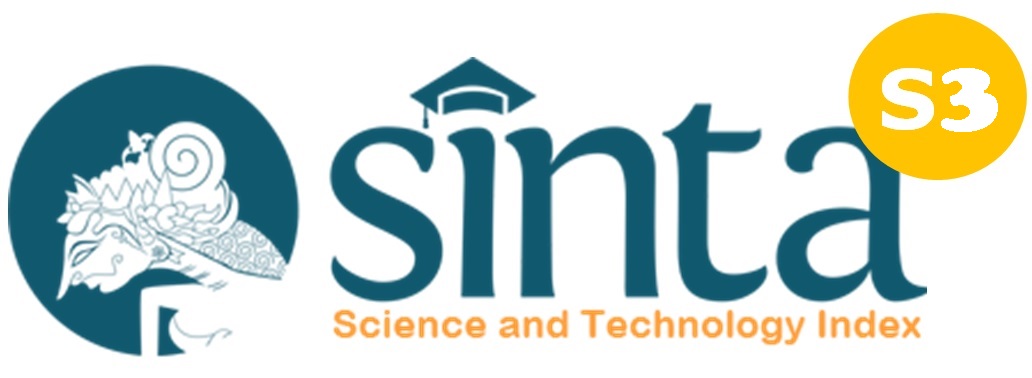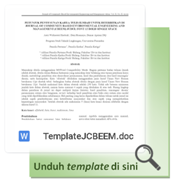Identification of Pops Organic Compounds in Sediment in the Cisangkuy Watershed Using GC-MS Analysis Method
DOI:
https://doi.org/10.23969/jcbeem.v8i2.17840Keywords:
Cisangkuy Watershed, GC-MS, POPs, sedimentAbstract
The Cisangkuy Watershed is a tributary of the Upper Citarum River located in the Bandung Basin, West Java. Based one previous research, one organic pollution in the Cisangkuy Watershed is the presence of POPs (Persistent Organic Pollutants) compounds. POPs are organic compounds that can last a very long time in the environment (persistent) and have toxic properties for organisms. This study aims to identify and analyse the organic content of POPs and sediments in the Cisangkuy Watershed, as well as to analyse the source of pollutants and categorise them based on the Stockholm Convention on Persistent Organic Pollutants. Identification of POPs compounds using gas chromatography-mass spectrometry (GC-MS) technique. Sediment sampling was conducted by grab sampling that involved 20 sampling points from upstream to downstream of the Cisangkuy Watershed (CS-1 to CS-20). Samples were collected from 9 sub-districts. The research location shows that the land activities at the sampling point include asphalt hot mix, pharmaceutical, textile, and manufacturing industries. The results showed the presence of 1,2-Benzenedicarboxylic acid, mono (2-ethylhexyl) ester, 4,8,12-Tetradecatrienenitrile, 5,9,13-trimethyl-, and 2-Hexyl-1-octanol compounds at sampling points from upstream to downstream. These compounds were derived from chemical industry effluents, fossil fuel combustion, and agricultural activities. The compounds are classified as ‘industrial waste’ and ‘industrial waste with antibiotic properties’ by the Stockholm Convention on Organic Waste Management.
Downloads
References
Affum, A. O., Osae, S. D., Kwaansa-Ansah, E. E., & Miyittah, M. K. (2020). Quality assessment and potential health risk of heavy metals in leafy and non-leafy vegetables irrigated with groundwater and municipal-waste-dominated stream in the Western Region, Ghana. Heliyon, 6(12). https://doi.org/10.1016/j.heliyon.2020.e05829
Afgatiani, P. M., Husni, A., & Budhiyanti, S. A. (2020). Aktivitas Antioksidan Bubuk Sargassum hystrix Selama Penyimpanan pada Suhu Berbeda. AgriTECH, 40(3), 175. https://doi.org/10.22146/agritech.18134
Aldi, D. (2024). Dampak pencemaran benzena terhadap lingkungan serta mekanismenya dalam memicu kanker : sebuah tinjauan literatur.Jurnal Pengelolaan Lingkungan Berkelanjutan, 8(1), 87–98.
Effendi, A. K. (2021). Karakterisasi Produk Redistilasi Asap Cair Dari Berbagai Sumber Biomassa. In Universitas Jember. https://repository.unej.ac.id/handle/123456789/103353, accessed September, 2024.
Febrita, J., & Roosmini, D. (2022). Analisis Beban Pencemar Logam Berat Industri terhadap Kualitas Sungai Citarum Hulu. Jurnal Teknik Sipil Dan Lingkungan, 7(1), 77–88. https://doi.org/10.29244/jsil.7.1.77-88
Handayani, C. O., Sukarjo, S., & Dewi, T. (2022). Penilaian Tingkat Cemaran Logam Berat Pada Lahan Pertanian di Hulu Sungai Citarum, Jawa Barat. Jurnal Ilmu Lingkungan, 20(3), 508–516. https://doi.org/10.14710/jil.20.3.508-516
Harsanti, E. S., Ardiwinata, A. N., Zulaehah, I., & Hidayah, A. (2021). A statistical model for remediation plan of endosulfan-contaminated lowland rice fields with agricultural waste. IOP Conference Series: Earth and Environmental Science, 648(1). https://doi.org/10.1088/1755-1315/648/1/012207
Puspita Rokhwani, H., & Syofyan Ratnaningsih, Y. (2010). Persistent Organik Pollutants (Pops) Di Beberapa Lokasi Pertanian Di Indonesia (2010). Jurnal Ecolab, 4(2), 55–62. https://doi.org/10.20886/jklh.2010.4.2.55-62
Rahi, A. A., Younis, U., Ahmed, N., Ali, M. A., Fahad, S., Sultan, H., Zarei, T., Danish, S., Taban, S., El Enshasy, H. A., Tamunaidu, P., Alotaibi, J. M., Alharbi, S. A., & Datta, R. (2022). Toxicity of Cadmium and nickel in the context of applied activated carbon biochar for improvement in soil fertility. Saudi Journal of Biological Sciences, 29(2), 743–750. https://doi.org/10.1016/j.sjbs.2021.09.035
Sakari, M., & Zakaria, M. P. (2013). Distribution, characterization and origins of polycyclic aromatic hydrocarbons (PAHs) in surficial sediment of penang, Malaysia: The presence of fresh and toxic substances. World Applied Sciences Journal, 23(11), 1481–1488. https://doi.org/10.5829/idosi.wasj.2013.23.11.615
Sampe, H. R., Juwana, I., Marganingrum, D., Lingkungan, T., & Geoteknologi, P. P. (2018). 527640-None-13853805. 2(2), 165–175.
Senaen, J. C., Prasetyaningsih, A., & Madyaningrana, K. (2022). Potensi Biofungisida Ekstrak Akar, Batang dan Daun Mentimun (Cucumis sativus L.) terhadap Fusarium oxysporum. Sciscitatio, 3(2), 100–108. https://doi.org/10.21460/sciscitatio.2022.32.96
Stocks, N. (2016). Analisis Metabolit Sekunder, Aktivitas Antibakteri dan Komposisi Golongan Senyawa Dalam Ekstrak Teripang Bohaschia sp. Jurnal ilmu dan Teknologi Kelautan Tropis, 8(2), 1–23.
SOP (Standard Operation Procedure). 2013. Instruksi kerja analisis senyawa organoklorin (poliklorobifenil/ pcb dan pestisida) untuk biota dan sedimen (Dibuat oleh Khosanah Munawir dan diperiksa oleh Edward, berlaku tanggal 26 Maret 2013). Pusat Penelitian Oseanografi LIPI Jakarta, 2 hal.
SOP (Standard Operation Procedure). 2015. Metode analisis senyawa organik PAH, pestisida dan polikkloridabifenil dalam air laut, seidmen dan biota. Laboratorium Kimia Organik. Pusat Penelitian Oseanografi-LIPI, Jakarta: 40 hal.
Utami, R. R., Geerling, G. W., Salami, I. R. S., Notodarmojo, S., & Ragas, A. M. J. (2020a). Agricultural Pesticide Use in the Upper Citarum River Basin: Basic Data for Model-Based Risk Management. Journal of Environmental Science and Sustainable Development, 3(2), 235–260. https://doi.org/10.7454/jessd.v3i2.1076
Wulandari, I., & Falahudin, D. (2020). Senyawa Pencemar Organik Yang Persisten (Pops): Pengertian, Jenis, Karakteristik, Dan Perkembangannya di Indonesia. Oseana, 45(2), 1–12. https://doi.org/10.14203/oseana.2020.vol.45no.2.53.














